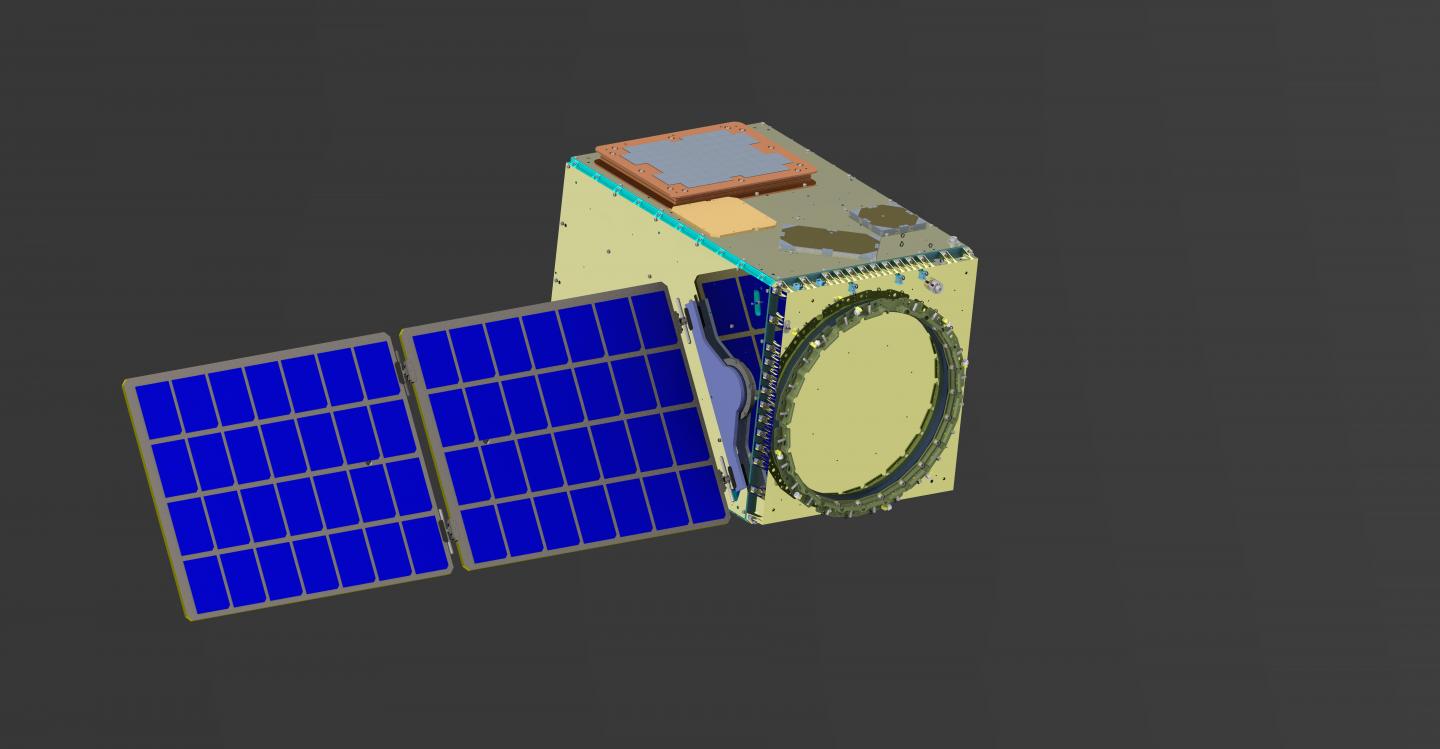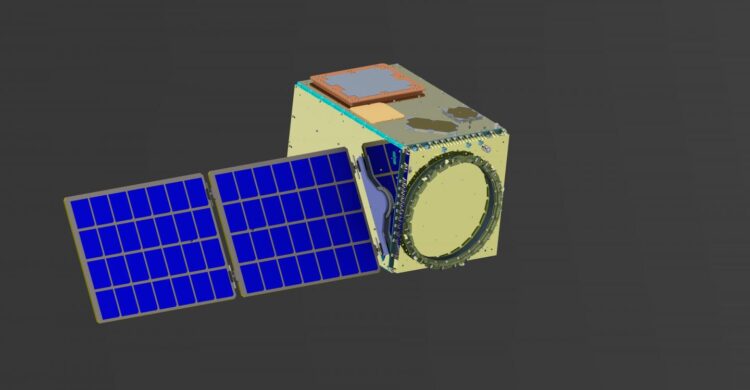SwSP-100 now available through the $6 billion Rapid Spacecraft Acquisition IV contract

Credit: SwRI
SAN ANTONIO — April 6, 2021 — NASA has selected Southwest Research Institute’s 100 kg-class small satellite (SmallSat) platform to be listed in the Rapid Spacecraft Development Office (RSDO) IV catalog used by the U.S. government to rapidly contract for flight-proven spacecraft. The Southwest Space Platform-100 (SwSP-100) is now available through the $6 billion, indefinite delivery/indefinite quantity (IDIQ) Rapid Spacecraft Acquisition IV contract.
Rapid IV contracts serve as a fast and flexible means for the government to acquire spacecraft and related components, equipment and services in support of NASA missions and/or other federal government agencies. The spacecraft designs, related items and services may be tailored, as needed, to meet the unique needs of each mission.
“Being selected for the RSDO IV catalog is a major milestone for the SwRI spacecraft development program,” said Michael McLelland, executive director of SwRI’s Space Systems Directorate. “Our strong heritage in all phases of science and technology development missions combined with our collaborative approach to working with customers makes us an excellent choice as a spacecraft provider for the unique missions developed under RSDO.”
The SwSP-100 is a versatile spacecraft platform designed to accommodate a range of missions and their payloads. Based on the SensorSat spacecraft, the SwSP-100 is an example of technology transfer from the U.S. government. Under multiple-award, IDIQ contracts, SwRI can provide spacecraft and related services that include delivery-on-orbit. These contracts can bundle complete end-to-end services that include the satellite and launch using government-placed, firm-fixed price delivery orders.
“SwRI’s SwSP-100 will be listed along with our smaller SwSP-35 platform, which was added to the RDSO catalog in 2020,” said Randy Rose, technical lead for SwRI’s RSDO program. “The combination of SwRI’s mission-centric focus and our clients’ needs for rapid response is the basis for the SwSP-100 spacecraft. We don’t take a one-size-fits-all approach. It’s satisfying to see how readily we’ve been able to use our SwSP-35 and SwSP-100 platforms to address missions across the SmallSat spectrum, from Earth science, heliophysics and astrophysics research to space situational awareness, surveillance and reconnaissance. Our relationships with key teammates and vendors across the SmallSat community allow us to quickly provide our customers with best-value solutions that meet their mission requirements.”
According to one industry forecast, as many as 11,600 small satellites — defined in this case as satellites with masses under 500 kilograms — will be placed in orbit between 2018 and 2030, an average of nearly 1,000 small satellites annually. This contract allows SwRI and its teammates to serve as trusted leaders in an industry that is changing rapidly through technology advancement and innovation.
“SwRI offers a new state-of-the-art spacecraft assembly, integration and test facility, designed for working with the latest launch providers,” said Steve Diamond, a senior program manager in SwRI’s Space Science and Engineering Division. “Using digital design and design-to-manufacturing (D2M) processes, we are able to rapidly field mission prototypes, then collaborate with industry to meet proliferated low-Earth orbit (LEO) constellation production requirements. Our work with New Space launch providers allows us to create a unique industry capability for deploying LEO SmallSat assets using launch campaigns measured in days instead of months.”
###
For more information, visit https:/
Media Contact
Deb Schmid
[email protected]
Original Source
https:/





